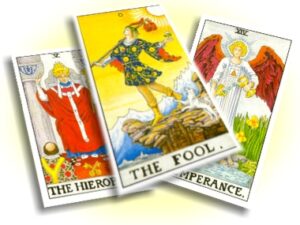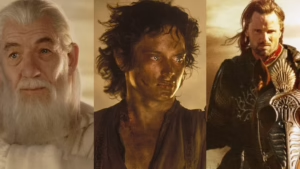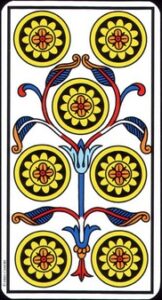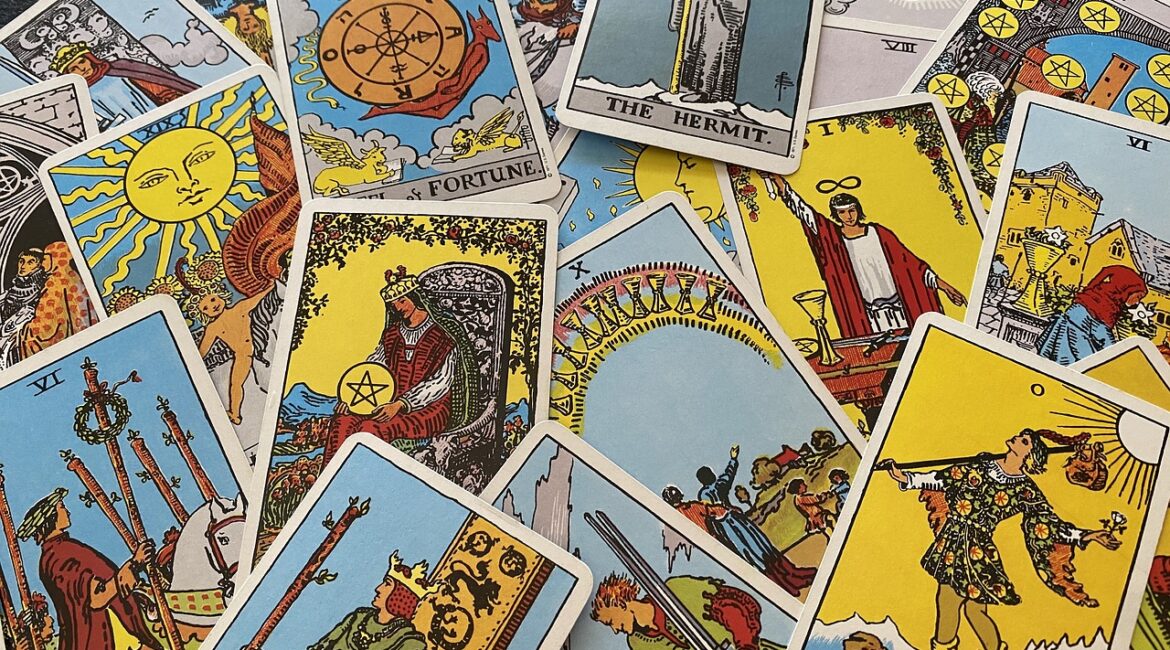My first serious, far-reaching contact with Tarot was during my training in Transpersonal Psychology in 2002. One of the counsellors psychologists, who is also co-founder of the Transpersonal Psychotherapy training school, the late Raymond Stevens, also worked with Tarot cards. How he used it as a therapeutic tool during our sessions to get things straight opened my eyes. Tarot cards used to float in an atmosphere of divination, fortune telling, and superstition, which made me a bit averse to this kind of thing.
After having a more thorough knowledge of Jungian psychology in this course and having learned the importance of archetypes, symbols, dream images,… it became more and more clear to me that these unconscious images and stories have more to say than I could imagine. The introduction to Jungian psychology in the training at the school of Transpersonal Psychotherapy had grown my interest in the world of Tarot images and I started a Tarot card course with Raymond Stevens in 2004.
Then I started to apply them to friends and acquaintances from time to time and I have to admit that I was sometimes surprised by the synchronicity of the cards that were drawn and the similarity with the theme and story that the person was dealing with at the time. The more I practiced with it, the more amazing I became and the more I liked it.
As a therapeutic tool

Now I use the Tarot cards as an aid in some therapeutic conversations, when clients are open to it. In this way, working with the Tarot becomes a way to gain insight into their current situation, to accept themselves and their lives. And from there to create an attitude to life of dancing for better or for worse. Tarot cards simply point to the flow that one is in now and they expose things that can give insight into how things went and what the consequences can be if we don’t look deeper or look further than the end of our noses. Before you want to take a step into this, first a word of explanation…
Your transformation process
The Tarot cards are a wonderful tool to gain insight into the course of your life development. They describe a journey, a course of the story of man in his process of becoming aware. Every person is a hero of his own life story. If we delve deeper into old stories, myths, sagas, legends, fairy tales, but also in contemporary films, books,… Then we notice a common pattern in every story.
The Hero’s Journey is the oldest story, where there are many other stories, fairy tales, myths, legends,… build on it. The hero’s journey is a journey with a typical pattern. It is made up of elementary building blocks: from an original loss or an assignment, a task emerges for the hero that he has to fulfill. He sets out to accomplish the Great Work, encountering helpers, such as fairies, a wise man, the fox,… and opponents such as a dragon, the thief, the witch,… He obtains an important charm, meets the adversary and conquers him, often branding himself. He returns with his treasure, shakes off competitors, and at the end, marriage and accession to the throne await.
A transformation process can take place in your life on different levels: don’t expect that you will also make an accession to the throne :). It’s about much smaller, but substantial changes around who you are, where you come from, why you’re here, where your path lies… In a transformation process there is a moment in which you retreat into the desert, listen to your unconscious, your intuition, feel deeper, you go into the night, it gets dark and so something has to die or be released. The seed must first die in the earth before it can bear fruit and become a flowering plant or tree. In fact, ‘death’ is inextricably linked to a transformation process. Whether you want to or not. In addition to the many written texts and books, this transformation process has also been depicted once in drawings: yep, in the tarot cards. And more specifically in the Major Arcana…
What are arcana?
Arcana comes from the Latin Arcanum and means secret. A tarot deck consists of 78 cards:
- The most important cards are what we call the major arcana: 22 cards that are archetypal images that live in every human being and that everyone recognizes something of regardless of age, era, culture or origin.
- The other 56 cards are the minor arcana and consist of four sets of 14 cards. Each sequence consists of elements: swords, staffs, cups, and pentagrams, and they consist of a series of cards numbered from 1 to 10, and four court cards: Page, Knight, Queen, and King.
The Major Arcana
Each card of the Major Arcana has a name and a number from 0 (zero) to 21. Most of the time, Roman numerals are used. While the Tarot of Marseille in the Minor Arcana does not depict human figures or scenes, the Rider-Waite Tarot shows a character or a human figure on each card, surrounded by a number of symbols from e.g. Gnosticism, astrology, Kabbalah, mythology,… All cards of the Major Arcana depict archetypal figures that we frequently encounter in heroic tales, epics, fairy tales,.. and movies too. Many archetypes can be found in so-called fantasy films such as Harry Potter, The Lord of the Ring, The neverending story,…

The main characters of the film trilogy “The Lord Of The Ring” are closely based on the books of the same name by JRR Tolkein. Tolkein drew inspiration from Norse and Celtic mythology to create the archetypes of his characters. This is probably why many of them are larger-than-life characters that seem to come straight out of a legend. For example, we have the underdog hero Frodo, the caretaker Sam, the leader/mentor Gandalf, The Warrior/Leader Aragorn, The Queen: Galadriel,… Read more in this blog about the archetypes in The Lord of the Ring.
The Major Arcana is also used, for example, by psychoanalysts in the analysis of the symbolic meaning of e.g. dreams, events,…
The Minor Arcana
Just like in a regular deck of cards, in the minor Arcana there are 4 ‘suits’, indicated by rods, cups or goblets, pentagrams or coins and swords. These correspond in a regular deck of cards with clubs, hearts, diamonds, and spades, respectively. Traditionally, these ‘colours’ symbolise the 4 medieval positions:
- Bars stand for farmers
- Cups for the Clergy
- Coins for merchants
- Swords represent the nobles and the soldiers
Each of these four colors is also connected to a natural element which says something about the quality of this color:

- Rods are associated with the element of fire, which stands for enthusiasm, energy, willpower, drive…
- cups with the element of water that, like emotions, is liquid and flows where it wants to flow. So, cups are about feelings, emotions,…
- coins with the element earth, which is physical and includes everything that has to do with literally coins or money, the financial, the physical body, matter,…
- Swords with the element of air that is volatile and ungraspable, just like thoughts that appear as clouds in the sky. They come and go, can be hot-tempered, then quiet again. This includes all kinds of thought patterns, memories, images, transmission from parents, educators, assumptions,…
Each suit contains 14 cards: ace, 2, 3,… up to and including 10 and 4 ‘court cards’: King, Queen, Knight and Page or Squire. Court cards that appear in a deck can usually represent people associated but also represent qualities of the person who draws the cards. In general, the cards of the Minor Arcana deal with everyday occurrences, while the Major Arcana reveal something on a deeper archetypal level.
Waarom zou ik beroep doen op Tarot kaarten?
Zaken die aan het licht kunnen worden gebracht als je beroep doet op de Tarot kaar-ten:
- Het loslaten van oude patronen en gewoontes.
- Niet leven gevende relaties.
- Overtuigingen van ouders, leraars,…
- Ambities die niet voor jou zijn.
- Emotionele pijnen, gehechtheden, zaken waar je je blijft aan vast klampen
- Het kan zijn dat je in een veranderingsproces zit op vlak van je werk. Het werk waar je nu in zit bevalt je niet meer, je voelt druk, stress en ‘weet’ dat er iets anders moet… maar je weet niet welke richting of je durft geen andere stappen te zetten…
- De relatie waarin je nu zit loopt al jaren spaak. Je voelt het niet kloppen… Maar wat nu?
- Er dient zich iets nieuws aan. Welke stappen dien ik te zetten? Wat zijn de relaties in mijn familielijn die mijn groei belemmeren?
- Als vrouw/man val ik altijd in dezelfde patronen terug tegenover mannen/vrouwen. Ik trek als het ware altijd dezelfde situaties aan. Hoe komt dit?



